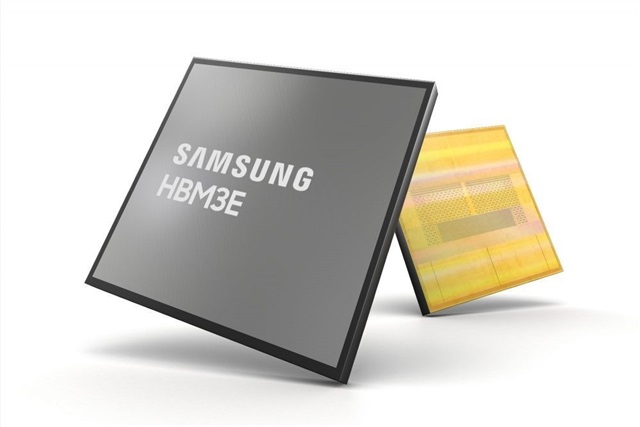Samsung Electronics is reportedly pushing back the mass production of its next-gen high-bandwidth memory (HBM) chips to 2026, signaling a more cautious rollout amid ongoing DRAM redesign efforts.
The company originally planned to start mass production of its 12-high HBM4 modules, which are based on 10nm-class sixth-generation 1c DRAM, in the second half of 2025. However, according to sources reported by the South Korean publication Deal Site, Samsung intends to deliver early samples to key customers in the third quarter of 2025, with full production readiness anticipated in the fourth quarter.
The delay comes as Samsung works to improve the performance and yield of its redesigned 1c DRAM chips. Internal testing is reportedly showing progress, with limited wafer runs reaching yield rates of around 65% as of early July. These samples, however, were not specifically designed for HBM applications, and actual yields in mass production may vary.
Two strategies for revising 1c DRAM
Typically, memory makers develop DRAM chips for computing use first before adapting the technology to mobile or HBM products. Samsung previously reiterated during its first-quarter earnings call that HBM4 development remains aligned with customer roadmaps, targeting mass production in late 2025. Yet the latest internal signals indicate a likely shift to 2026.
Despite the delay, Samsung's redesigned 1c DRAM appears to be making progress. According to industry sources, the company is pursuing two strategies to revise the 1c DRAM: one involves modifying previous 1a and 1b designs, while the other entails a complete redesign to create a new generation of chips. The full redesign, which results in larger chip sizes, has achieved higher production yields but incurs increased costs due to greater wafer usage and development efforts.
The success of Samsung's HBM4 hinges on whether it can sustain the yield rates achieved during pilot runs through to mass production. Additional testing phases remain, and PRA clearance is not a definitive indicator of success, insiders warn. Yield challenges often surface during full-scale ramp-ups, and stabilizing both output and quality will require further time.
SK Hynix posts record Q2 earnings
SK Hynix reported record quarterly results on July 24, driven by strong demand for HBM and AI-related memory products. The company's operating profit for the second quarter increased 68% year-over-year to KRW9.21 trillion (approx. US$6.70 billion), while sales rose 35% to KRW22.23 trillion (approx. US$16.16 billion). Net income reached KRW6.99 trillion (approx. US$5.08 billion). HBM and related DRAM products represented 77% of total revenue, contributing to the memory division's strongest performance to date.
SK Hynix reported operating profit figures that significantly exceed Samsung Electronics' preliminary group operating profit of KRW4.6 trillion (approx. US$3.34 billion) for the same timeframe. The company's operating margin rose to 41%, while its cash reserves grew to KRW17 trillion (approx. US$12.36 billion). Additionally, net debt decreased by KRW4.1 trillion (approx. US$2.98 billion) compared to the previous quarter.
SK Hynix rides AI wave with bold HBM expansion
SK Hynix is betting big on the AI boom to power continued growth through the second half of 2025. The South Korean chipmaker expects robust demand to persist, fueled by large-scale AI model training, sovereign AI projects, and new product launches.
SK Hynix intends to double its sales of HBM in 2025, propelled by strong demand for its HBM3E chips, which have entered mass production. The company is also preparing for the next generation, HBM4, aiming for a commercial launch in 2026 after distributing early samples in March.
In addition to HBM, SK Hynix plans to start shipments of LPDDR-based server modules later this year and to broaden its GDDR7 product lineup for AI graphics cards with the introduction of a new 24Gb chip. On the NAND memory front, the company will maintain a cautious investment approach, prioritizing profitability and the expansion of QLC-based enterprise solid-state drives (SSDs).
SK Hynix has confirmed that its M15X fabrication facility is scheduled to open in the fourth quarter as planned, with production, including HBM, expected to commence next year. The Yongin Cluster 1 fabrication plant is projected to be completed by the second quarter of 2027. The company also indicated that its capex for 2025 is anticipated to exceed earlier forecasts.

Credit: SK Hynix
Article edited by Jack Wu


